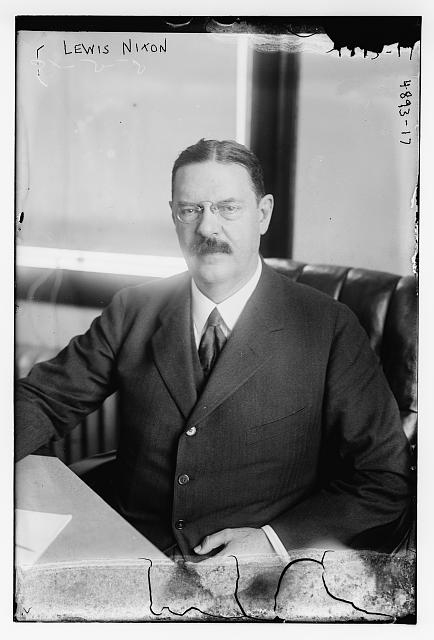Lewis Nixon (Lewis Nixon)

Naval Architect, Shipbuilding Executive, Businessman, and Political Activist. He is remembered for designing the US Navy’s first modern battleships, and supervising the construction of its first modern submarines. Born in Leesburg, Virginia he received an appointment to attend the US Naval Academy at Annapolis, Maryland and graduated first in his class in 1882. He was then sent to study naval architecture at the Royal Naval College in Greenwich, England and appointed an assistant naval constructor with the rank of lieutenant and graduated first in his class in 1885. After returning to the US he was assigned to the John Roach & Sons shipyard in Chester, Pennsylvania, which the US Navy had commandeered in order to finish three protected cruisers of the new steel navy, the USS Atlanta, USS Boston, and USS Chicago. In 1890 he helped design the three Indiana-class battleships, the USS Indiana, USS Massachusetts, and USS Oregon. While in Pennsylvania, he earned a Doctor of Science degree from Villanova University near Philadelphia. He then resigned from the US Navy to work as Superintendent of Construction for William Cramp and Sons Shipbuilding Company. In January 1895 he began his own business in association with shipbuilder and naval architect Arthur Leopold Busch by leasing the Crescent Shipyard in Elizabeth, New Jersey and they built a number of vessels, including torpedo boats USS Nicholson and USS O’Brien, cruiser USS Chattanooga, monitor USS Florida, and gunboat USS Annapolis. In December 1896, the Crescent Shipyard, under his oversight, built the US Navy’s first submarines, beginning with the USS Holland. Their success led to an order for more submarines of the “Holland Type” by the US Navy, known as the Plunger-class submarines, that were built at the Crescent Shipyard and the Union Iron Works, located near Mare Island Naval Shipyard north of San Francisco, California. In January 1898 he was appointed as president of the East River Bridge Commission and oversaw the construction of a second span across the river, known as the Williamsburg Bridge. Active in Democratic party politics, in December 1901 he was chose by longtime Tammany Hall boss Richard Croker to become his successor but he resigned several months later due to its corruption. In 1902 he presided over the consolidation of Crescent Shipyard with six other shipyards on the East and West Coasts, to form a single shipbuilding trust, under the name United States Shipbuilding Company but the following year it went into receivership and reemerged without him as the Bethlehem Steel and Shipbuilding Company. He also founded the Standard Motor Construction Company of Jersey City, New Jersey and the International Smokeless Powder and Dynamite Company of Parlin, New Jersey that was acquired by the E. I. du Pont de Nemours and Company in 1904, forming part of what would soon be deemed DuPont’s unlawful monopoly of the gunpowder industry. From late 1904 to January 1906 he was in Russia supervising the construction of ten torpedo boats for the navy of Czar Nicholas II. He played a key role in the 1908 Democratic National Convention, where he chaired the subcommittee on the platform, overcame Tammany Hall’s initial hostility to Democratic presidential nominee William Jennings Bryan to deliver New York’s delegation for him, and was urged as Bryan’s running-mate. From 1915 until his death, he was president of the Nixon Nitration Works, in what is now Edison, New Jersey. In 1919 he was appointed by New York Governor Al Smith as the New York State’s Superintendent of Public Works, and then as New York City’s Regulatory Public Service Commissioner. He died in Long Branch, New Jersey at the age of 79. He was the grandfather of Lewis Nixon III, a US Army officer in the 101st Airborne Division during World War II, who was made famous by the miniseries “Band of Brothers.” (bio by: William Bjornstad)
Born
- April, 07, 1861
- USA
Died
- September, 09, 1940
- USA
Cemetery
- Union Cemetery
- Virginia
- USA

